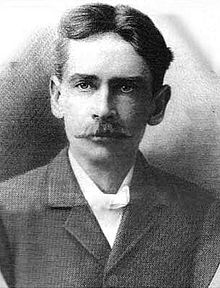William Stanley (physicist)
| William Stanley Jr. | |
|---|---|
 |
|
| Born |
November 28, 1858 Brooklyn, New York |
| Died | May 14, 1916 (aged 57) Great Barrington, Massachusetts |
| Education | Williston Seminary |
| Alma mater | Yale University |
| Spouse(s) | Lila Courtney (Wetmore) Stanley |
| Children | Harold Stanley |
| Awards | IEEE Edison Medal (1912) |
| Scientific career | |
| Fields | Electrical engineering |
| Institutions | General Electric |
William Stanley Jr. (November 28, 1858 – May 14, 1916) was an American physicist born in Brooklyn, New York. In his career, he obtained 129 patents covering a variety of electric devices. In 1913, he also patented an all-steel vacuum bottle, and formed the Stanley Bottle Company.
Stanley was born November 28, 1858 in Brooklyn, NY, the son of William Stanley and Elizabeth A. Parsons Stanley. William Jr. attended Williston Seminary and later graduated from Yale University with the class of 1881.
Stanley was as an electrician working with tele keys and fire alarms of an early manufacturer. In Philadelphia, Stanley designed one of the first electrical installations (at a Fifth Avenue store). Shortly thereafter, George Westinghouse hired Stanley as his chief engineer at his Pittsburgh factory.
In 1885, Stanley built the first practical alternating current device based on Lucien Gaulard and John Dixon Gibbs' idea. This device was the precursor to the modern transformer. In December, under a new contract with Westinghouse, Stanley moved his operations to Great Barrington, Massachusetts.
In 1886, on March 20, Stanley demonstrated the first complete system of high voltage Alternating Current transmission, consisting of generators, transformers and high-voltage transmission lines. His system allowed the distribution of electrical power over wide areas. He used the system to light offices and stores along the main street of Great Barrington - the location of his West Avenue family home. Stanley's transformer design became the prototype for all future transformers, and his AC distribution system formed the basis of modern electrical power distribution. He was the first person to make an electrical transformer, and his work in the electrification of Great Barrington's Main Street was named an IEEE Milestone.
...
Wikipedia
